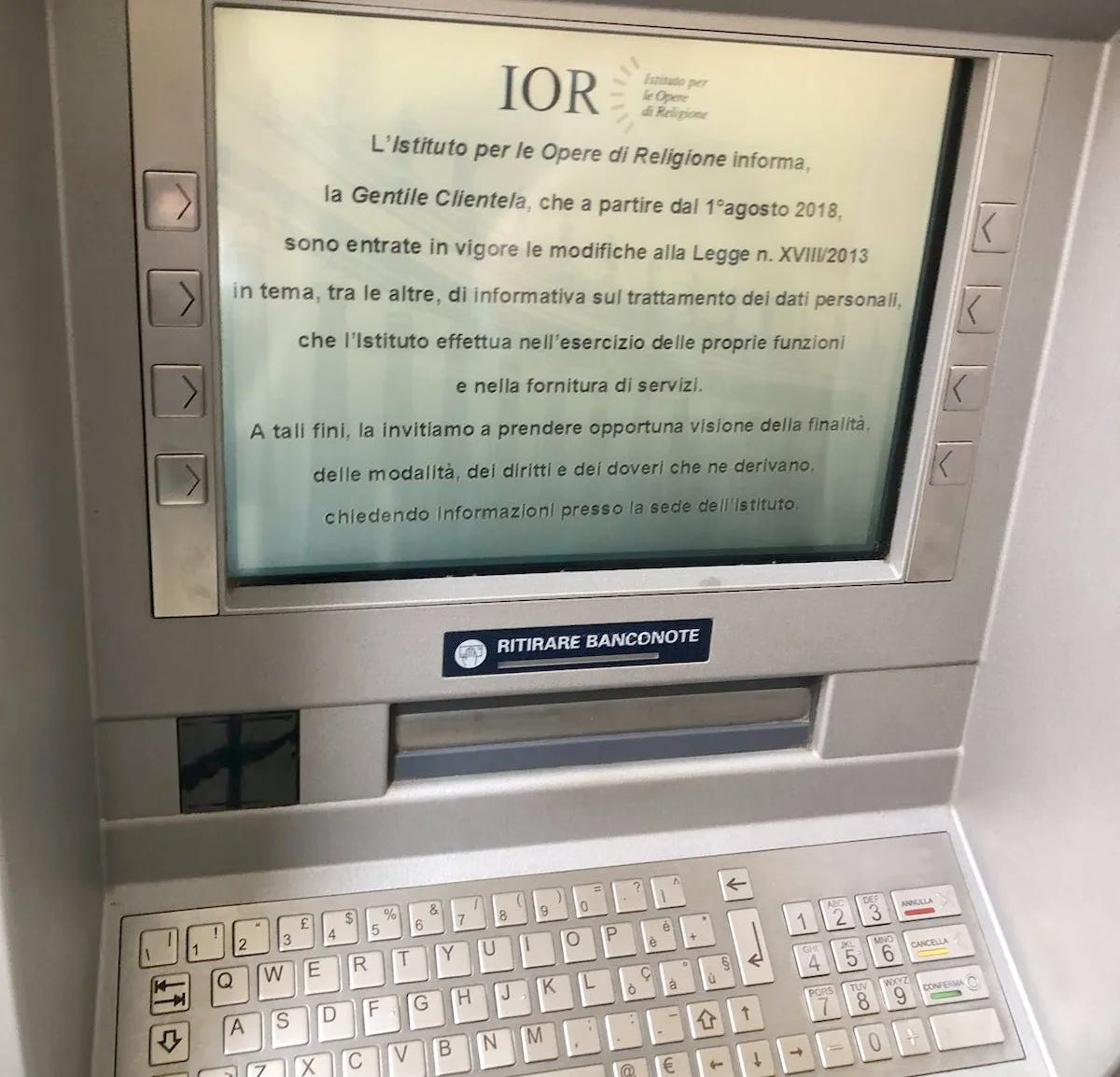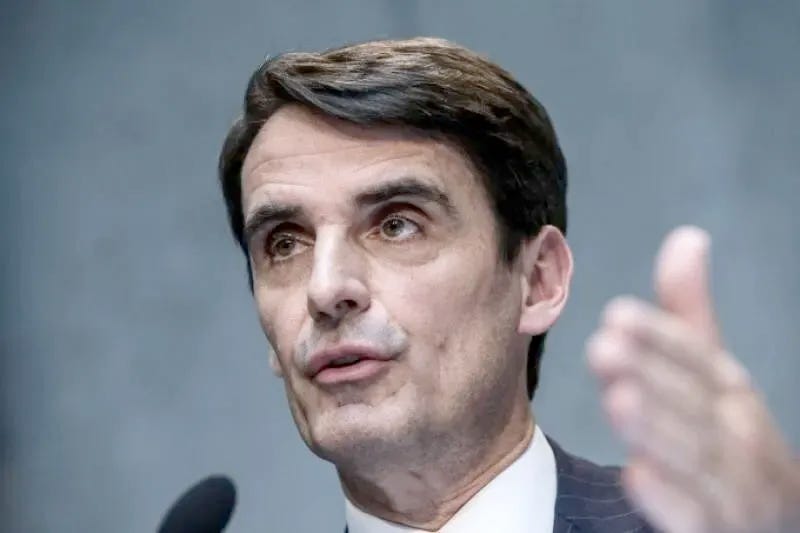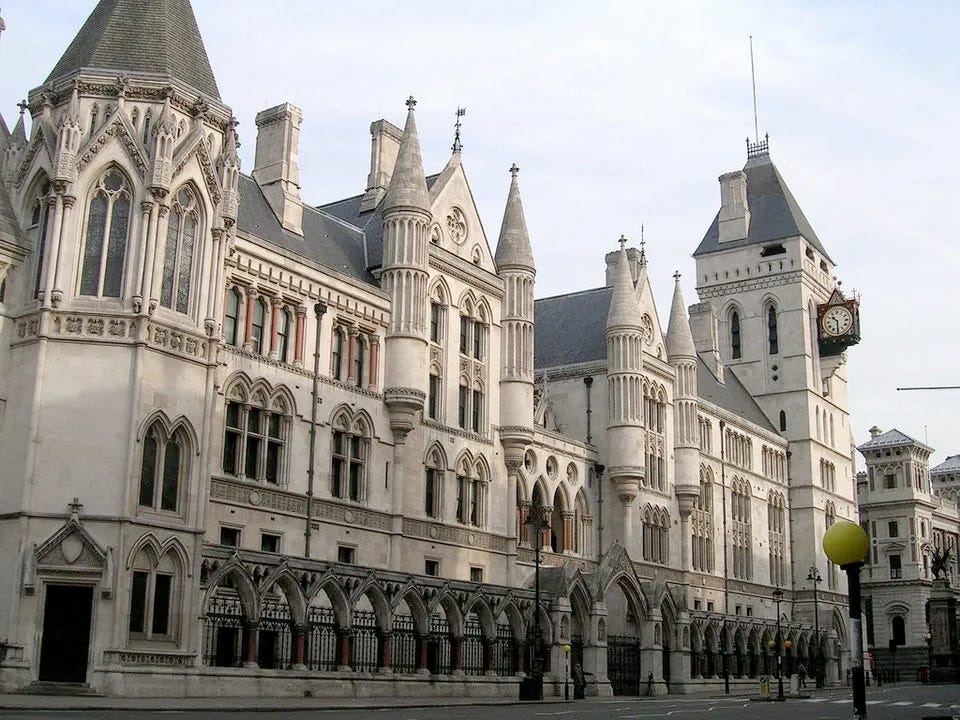The Institute for Works of Religion, the Vatican’s only commercial bank, has recorded another year of increased profits, enhanced financial stability, and high regulatory vigilance.
The institution was, for decades, a byword for scandal, corruption and conspiracy theories. But its 2023 annual report, issued June 14, recorded news levels of profitability, allowing significant charitable disbursement to Catholic projects around the world.
At the same time, the bank reported that its financial stability climbed, that there was “100%” compliance with its ethical investment policy, and the bank flagged more than 100 potentially suspicious transactions to financial watchdogs.
As the IOR continues to gear up for its new role as central asset manager for all curial institutions, it is looking increasingly like the IOR is the most bankable Vatican success stories for Vatican reform.
In his statement opening the 2023 annual report, IOR president Jean-Baptiste de Franssu noted that he and most of the bank’s current board of superintendents have been working for a full decade to transform the institution.
“It has now been 10 years since the board of the IOR has embarked on transforming and developing the Institute to enable it to fulfill its original mission: to be an instrument to assist the Holy Father in his mission as universal pastor and also aid those institutions and individuals who collaborate with him in his ministry for Works of Religion.”
“Over those years many public accolades attest to the quality and professionalism of those efforts: the results of the [European regulator] Moneyval review with a best in class ranking for IOR, the adherence to the european SepA payment system, [and] the signing of tax agreements with Italy and USA to ensure full tax transparency,” said de Franssu.
The bank is now “ready to play its role in the process of centralization of all asset management activities in the Vatican as per the Holy Father’s instructions,” he said.
Adherence to international standards and gearing up for Francis’ expanded vision for the IOR are both key markers of progress for the institution.
But any bank’s health has to be measured, at least in part, in terms of euros — and on that front, the IOR seems to be doing even better.
Managing some 5.4 billion euros in client assets, the bank posted a net profit for 2023 of more than 30 million euros, up from 2022, and boosted its intermediation margin — the difference between how much it made on interest versus how much it paid in interest to clients — to nearly 50 million euros, a nearly 50% increase over the previous 12 months.
The results of that financial success mean that the bank’s commission of cardinal supervisors were able to allocate more than 13.5 million euros for Catholic works of charity and religion — one million more than the previous year.
Of course, financial institutions can post high profit margins and big growth numbers any number of ways, not least by going in for high-risk/high-reward business plans.
But according to the IOR’s report, the bank has actually transformed into one of the most conservative financial institutions in Europe, posting a TIER 1 capital ratio of 60% — up by more than 29% over the previous year’s already high rate.
The ratio is an international standard measuring liquidity and institutional risk exposure for financial institutions. The minimum international banking requirement is a ratio of 6%.
For comparison, in April 2023, Bank of America posted a TIER 1 ratio of 13%, and the European banking average in June last year was less than 16%.
The bank’s turnaround over the last decade is a remarkable and somewhat unique success story in the Vatican financial reform. It has been at the center of several financial scandals in its history, most notably the Banco Ambrosiano scandal of the 1980s.
But since 2013 it has published a regular annual report following independent auditing of its business — a level of consistent transparency unmatched by any other Vatican department, including the Secretariat for the Economy, the department charged with the regulation and monitoring of all curial financial and administrative affairs.
The bank has also become, at least in some Vatican watchers’ estimations, the most committed agent of financial vigilance.
In 2019, it was the IOR leadership who flagged — despite threats and offers of “protection” from other Vatican departments, including the Secretariat of State — the suspicious activity which led to the uncovering of the London property scandal and Vatican financial crimes trial which convicted nine people, including a cardinal, last year.
As a civil party to that case, the bank filed a claim for 1 million euros in reputational damages against the defendants, which include the former deputy head of the Secretariat of State, Cardinal Angelo Becciu.
Following that result, De Franssu hailed the recovery of more than 17 million euros by the bank “which had been stolen from the [IOR] before 2014” as “amongst the important achievements” of 2022.
The year-on-year reforming success of the bank was recognized by Pope Francis in 2022, when he changed the Vatican’s constitutional law and ordered all Vatican accounts, funds, and investments over to the IOR.
Those changes came just months after the pope promulgated Praedicate Evangelium, his long-anticipated constitution for the Roman curia, and reversed one of its key financial reforms.
Praedicate Evangelium had cemented the pope’s landmark reform of ordering all Vatican departments and affiliated institutions to move all of their assets and investments to APSA, “the entity responsible for the administration and management of the real estate and movable assets of the Holy See.”
But just weeks later, Francis issued a rescript ordering instead that all Vatican accounts, funds, and investments move over to be managed by the IOR, instead of APSA, which was left only with the Holy See’s real estate portfolio.
The following year, 2023, Francis confirmed new statues for the bank which had been in place ad experimentum since 2019, granting it enhanced operational independence.
But, although de Franssu stated in his 2023 annual report that the bank is now “ready to play its role in the process of centralisation of all asset management activities,” per the pope’s instructions, the extent to which that process is underway, or the timeline for its completion remains a notably vague point in an otherwise forthright review of the IOR’s activities.
Many within the Vatican credit the health of the IOR, especially compared to other Vatican financial institutions, to the leadership team of de Franssu and Gianfranco Mammi, the banks director general, as well as a healthy membership of external lay members on the bank’s board of superintendence.
Their stability in office could prove key to the completion of Francis’ order for the centralization of all Vatican deposits and assets at the IOR, as well as preserving the bank’s culture of transparency and regulatory probity will likely prove the next big phase of its ongoing reform.
Key among Francis’ changes to the bank, first made in 2019 and confirmed in the revised statutes confirmed in 2023, was the institution of five-year term limits — renewable only once — for members of the bank’s lay board of superintendence and commission of cardinal supervisors.
De Franssu assumed his current role in 2014, meaning this year would see the end of his second five-year term, and potentially paving the way for a turnover at the head of the bank.





